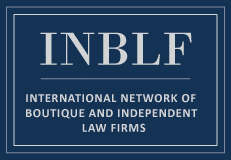Antitrust lawyers well know that price discrimination claims under the Robinson-Patman Act (RPA) can be very difficult to win. For example, going as far back as 1953, the SupremeCourt has held that there is no buyer liability under Section 2(f) unless the plaintiff (the disfavored buyer) can show the defendant (the favored buyer) knew both:
- that it was receiving a lower price than its competitor; and
- that there was “little likelihood” that the discriminatory prices it received were not justified by savings to the manufacturer and, therefore, did not qualify for the RPA defense.2
But, does a supplier’s dominant exclusive distributor’s knowledge and receipt of lower prices than its smaller multi-brand competitor-buyer imply that it has a duty to inquire of the supplier whether the favorable prices it received might be prohibited by the RPA? According to the Ninth Circuit’s July 19, 2013 decision in Gorlick Distribution Centers, LLC v. Car Sound Exhaust System, Inc.,3 the answer now is “No” – the plaintiff (unfavored buyer) or the FTC must allege and prove that the defendant actually coerced the seller in some factually demonstrable fashion – e.g., “insisted that none of its competitors be offered the same deal.”4 Thus, a dominant buyer permissibly may heighten the manufacturer’s recognition and fear of the dominant buyer’s purchasing power, and thereby compel – i.e., induce – the manufacturer to grant to the buyer special concessions and lower wholesale pricing than its competition. 5 This “tacit” or “covert” pressure – e.g., aggressive vendor bargaining by a powerful exclusive distributor – now, as a matter of law in the Ninth Circuit, no longer is sufficient to justify a prima facie showing that “coercion” existed, and was successfully applied by the favored buyer, in order to sustain a Section 2(f) violation.6 This development, which abrogates the Ninth Circuit’s 1966 decision in Fred Meyer, Inc. v. FTC,7 undoubtedly will make what already is a rare and difficult RPA claim – Section 2(f) – even more difficult to successfully assert, at least in the Ninth Circuit.
The Gorlick opinion also reiterates that claims alleging vertical restraints in ostensible violation of Section 1 of the Sherman Act must plausibly show injury to competition, and the Ninth Circuit remains reluctant to provide plaintiffs latitude in the absence of demonstrative anticompetitive harm. As Gorlick demonstrates, even if a defendant has not raised issues of injury to competition and antitrust standing – either with the district court or on appeal – the Ninth Circuit may do so itself by requesting supplemental briefing following oral argument before the Court.8

